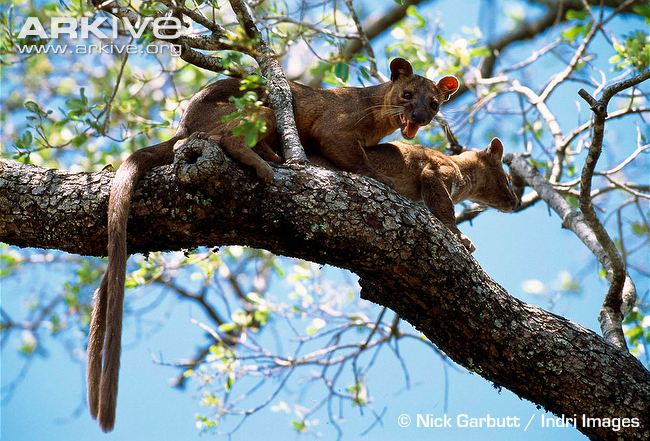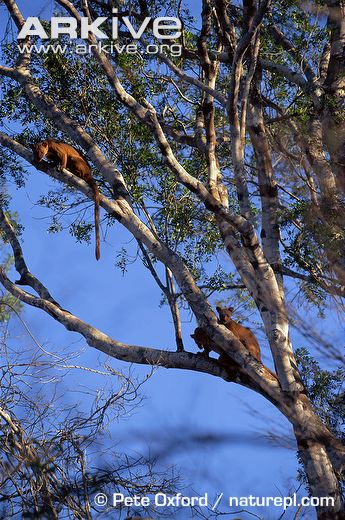
Reproduction
Since fossas are solitary figures,
they only interact with each other when they mate. They begin to
breed at the age of three (Sunquist, 2000), and the choosing of
a mate is based solely on female dispersion (Hawkins & Racey
2009). Mating occurs from September to November each year and
pregnancy for female fossas lasts about three months. Females
usually give birth to two to four young, in either a tree or a
den on the ground (ARKive 2013, Encyclopedia of Animals 2006).
When born, a Fossa is blind, toothless, and about the size of
the palm of your hand. After three weeks they can open their
eyes, and they do not leave their mother until they are well
over a year old (Sunquist, 2000).
The mating system of a fossa is a little
unusual, seeing that it happens in the tree tops and it is a very
long and slow process. During mating season, a female will occupy a
single tree where males will flock to compete for her. This is
really the only time male fossas will show aggression and interact
with other male fossa. When a single male fossa reaches the top of
the tree, he will mount the female, bite the back of her neck, and
reproduction occurs. This copulation process can sometimes last up
to 165 minutes (Encyclopedia of Life, 2013). The female stays in the
tree for about a week, and mates with multiple males. After the week
is up, a new female will take the original female’s place, and the
process will start all over again (ARKive 2013). Click
here for a video of the aggressive mating process. 
Another unusual thing about fossas is the development of females as they grow and this phenomenon is most noticeable when they are about 8 to 18 months old. What happens is their clitoris becomes prominent and elongated, and develops small rigid spines. This is peculiar because essentially it resembles a male fossas penis. They likewise cultivate a red color around their groin, which is usually only observed in males (WAZA (n.d.)). Basically, they go through this period of masculinization, which at the moment cannot be explained by biologists (BBC (n.d.)). This is similar to that of other animals, like a female spotted hyena, whose clitoris also becomes enlarged and looks like a penis. However, in female fossas, the clitoris will diminish in size as they grow (Encyclopedia of Life (n.d.)). This is just another example of why fossas are so mysterious in how they look, act, and grow.
Photo 1: Nick Garbutt
Photo 2: Pete Oxford